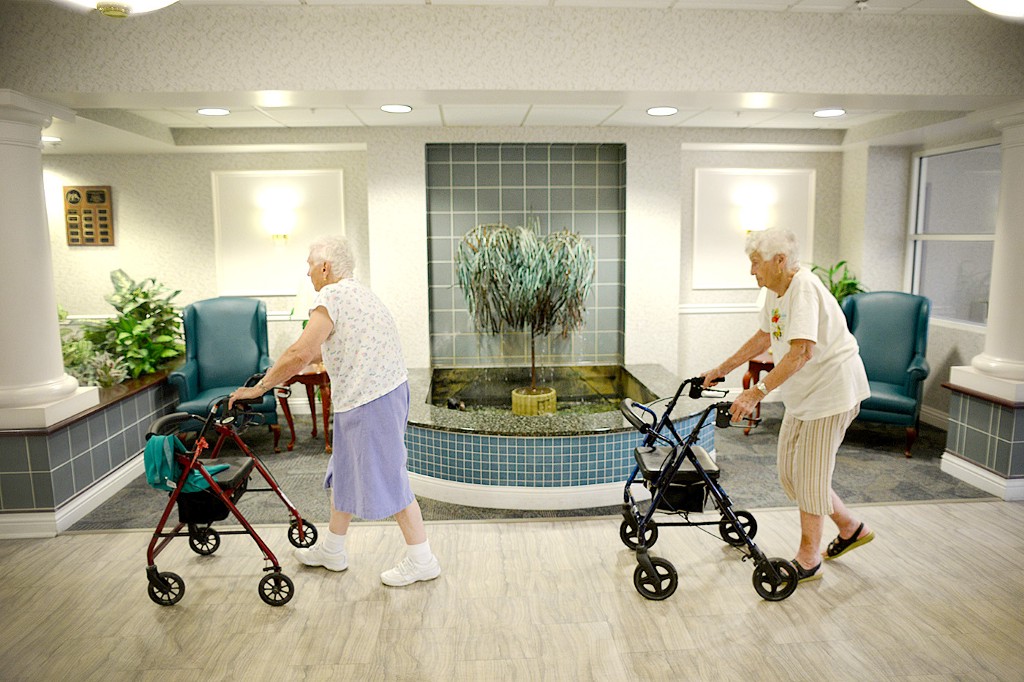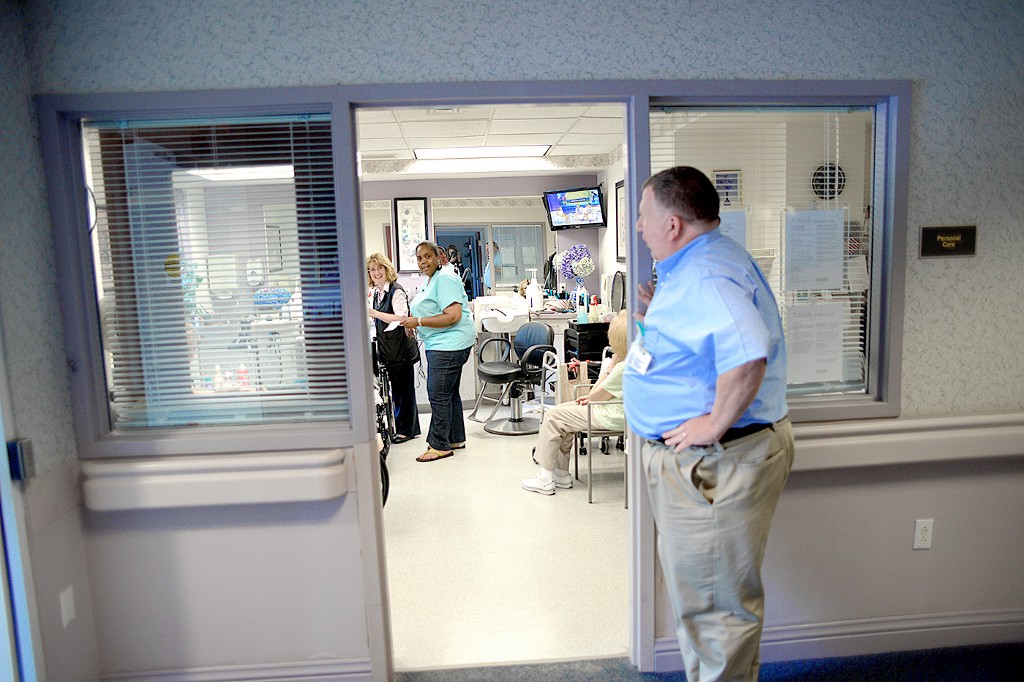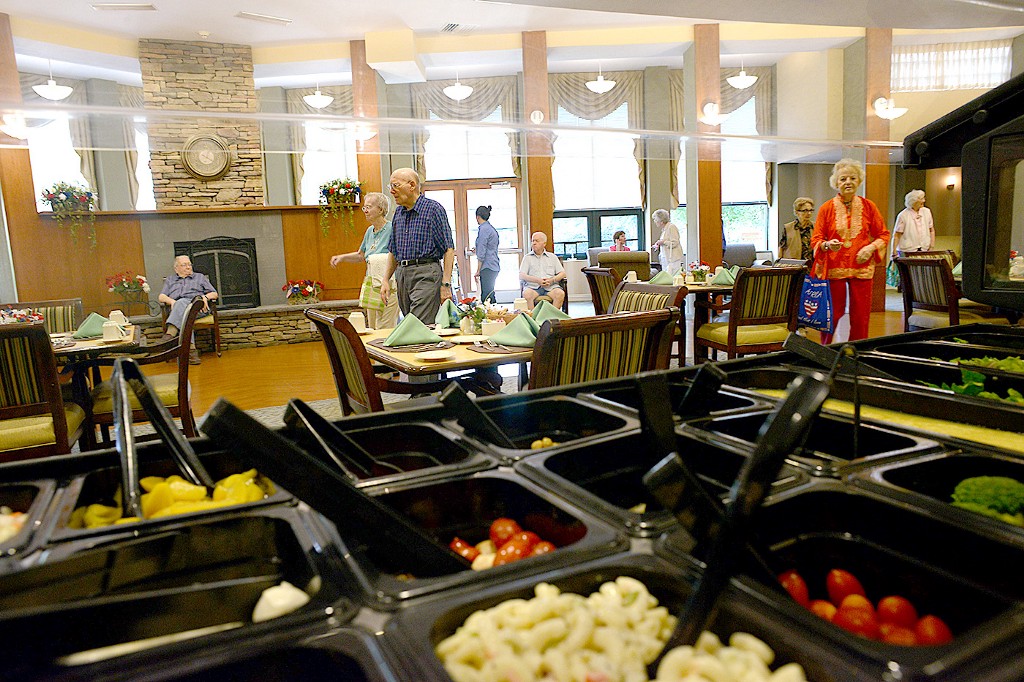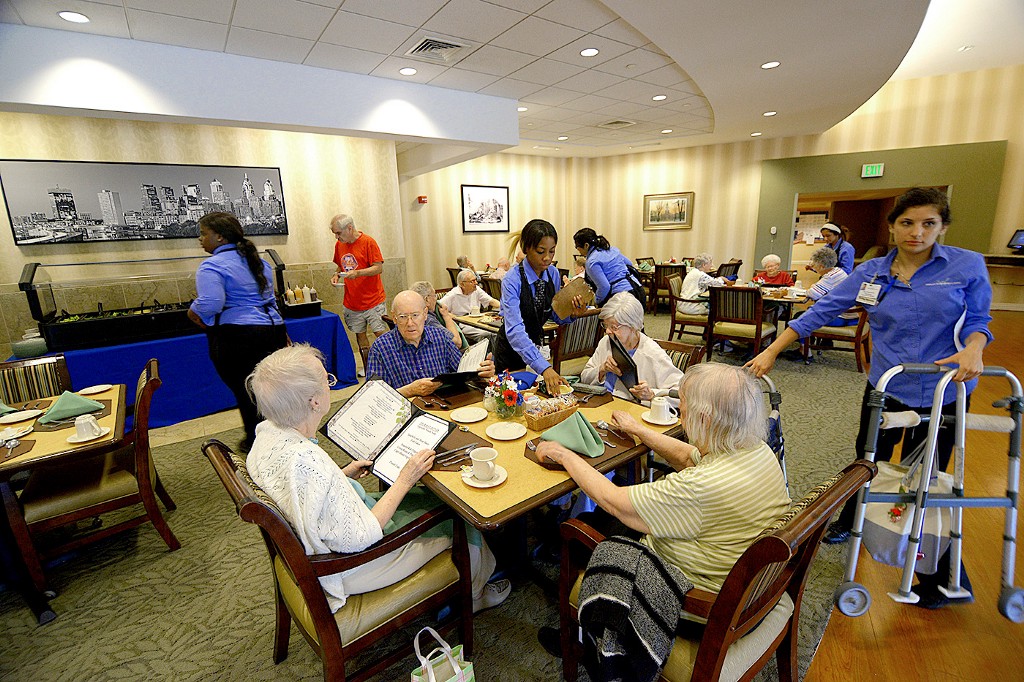The art therapy and physical therapy space at Philadelphia Protestant Home. MARIA POUCHNIKOVA / TIMES PHOTOS
“Nursing homes” are rarely called that anymore. “Skilled nursing facilities” or “managed-care communities” are the more common names. But they are what they are: residences for elderly people who need medical attention.
In the past decade or so, there’s been a tangible change in how these homes — whatever they’re called — operate. Long modeled to be institutions that look like hospitals, many of them have been altering their looks, their buildings, their dining choices and their lifestyles to become more like what they’re supposed to be: homes.
After all, said Bill Conaway, director of community relations for the Philadelphia Protestant Home in Lawndale, “Who wants to go to an institution?”
“For people who live here, this is a home, not something like home, home,” said Mary Beth Linde, director of human services at Paul’s Run in Bustleton.
That’s wasn’t how nursing homes used to operate, she said.
“We got it very wrong for a very long time. We did things for the staff’s convenience,” she said during a June 21 interview at Paul’s Run.
“But we had the audacity to call it a home.”
A nursing home, its equipment and its personnel were more like offshoots of hospitals, said Ken Franiak, the chief operating officer of Wesley Enhanced Living, which has facilities at 8401 Roosevelt Blvd. and 7040 Oxford Ave. in the Northeast.
Nursing homes, he said, “looked, felt and tasted like a hospital.”
For the past eight years, Franiak said, Wesley has been moving to change that.
“We’re trying not to be the same old same old,” he said. “We’re trying to get away from an institutional feel.”
Changes have been occurring at Paul’s Run over the past several years. In April, Linde said, Paul’s Run’s Halle Health Center altered its look and the way it does things for its 120 residents. To help move away from a traditional medical model, each floor was divided into a different neighborhood.
For example, there’s Casino Way, Eagles Avenue and Hollywood Boulevard, Linde said. Staff and residents decorate the hallways and common areas of their neighborhoods themselves, she said, and staffers are closer to residents and do more with them. Rooms, dining, daily schedules and activities are more personalized. Residents have choices of activities and dining times, and more menu choices, too.
Resident Thelma Barbieri has been at Paul’s Run for almost four years and she’s noticed the change.
“I do more. I eat better and have more of a social life,” she said.
For nursing assistant Iris Taylor, one of the big transformations has been in residents’ outlooks and how they interact with each other and with staffers.
One resident has been silent for years, Taylor said, and she has begun speaking.
“She says a lot now,” Taylor said.
More than 12 percent of Philadelphia’s 1.5 million residents are 65 or older. Northeast Philly is home to the most senior citizens in the city.
This section of the city has the densest population of senior citizens in the nation, said Anthony Manzo, president and CEO of the Philadelphia Protestant Home.
“There are more seniors here than in any other part of the country,” he said.
Rhawnhurst, for example, has such a high population of elderly people who continue to reside in their own homes that it is called a “naturally occurring retirement community.”
Seniors make up more than 20 percent of Bustleton’s population. In ZIP Code 19111, they are more than 15 percent.
There are several retirement communities in the Northeast, and they offer skilled nursing facilities as well as independent living. Manzo said the Philadelphia Protestant Home started altering its approach to its nursing home services in the late 1990s and incorporated those changes into Pathways at its seven-building, 12.5-acre Lawndale facility.
The four-story structure has homey furniture and a lot of windows. Natural light, Manzo said, is a big component of the changes in the nursing home industry.
Rooms are large as are common spaces, he said. Colors are warmer, he said. “We really want people to feel it’s more homelike.”
At Pathways, Manzo said, there are nine “neighborhoods” on three floors. Franiak said Wesley began renovating its Philadelphia and suburban campuses eight years ago.
“We have restaurant-style dining. … We’re trying to not have the typical day-to-day activities,” he said. “We’re looking to residents to tell us what to do to make their lives better.”
He said Wesley gets residents out of the building and takes them on trips. “We’re trying to be unique. It’s a process that continues,” he said. ••

Enjoying the upgrade: Residents at Philadelphia Protestant Home take a walk around the new lounge area with a water fountain in the background. MARIA POUCHNIKOVA / TIMES PHOTOS

Bill Conaway shows the Philadelphia Protestant Home beauty salon, which offers full nail and hair services. MARIA POUCHNIKOVA / TIMES PHOTOS

The dining area at Wesley Enhanced Living, offers residents different meal options. MARIA POUCHNIKOVA / TIMES PHOTOS

Enjoying the upgrade: A wait staff helps residents order their meals at the Wesley Enhanced Living dining hall. MARIA POUCHNIKOVA / TIMES PHOTOS





